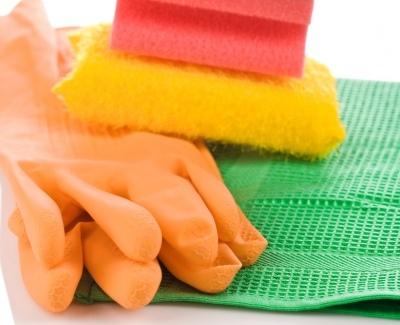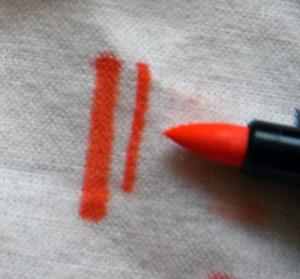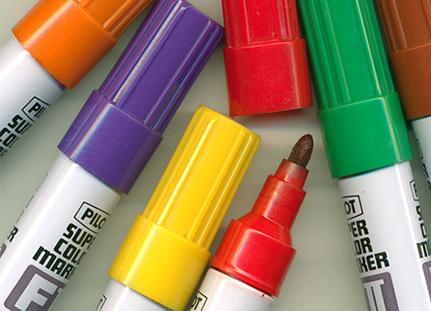Instead of a sketchbook, did the child switch to jeans or a turtleneck? It does not matter, because it is quite simple to reduce a fresh marker. The only rule is that the final result depends on the basis of the marker. So, let's figure out what kind of felt-tip pen you got.
BUT how to remove gouache from clothesif a young artist prefers to paint, read a separate article on our website.
How to remove a stain: general principles

Random letters are easy to deduce if the trail has just been set. The older the stain becomes, the harder it is to cope with it. The first stain remover that comes to hand is not your friend at all. Examine the markings on the felt-tip pen itself, if it has survived, and determine the basis of the culprit of washing, only then proceed to deduce the consequences. The main types of felt-tip pens:
- alcoholic;
- water;
- classic fatty;
- on a chalk basis;
- based on paints and varnishes.
Coloring from a water felt-tip pen

The water marker is easier to remove than the others. Optimal stain removers: ammonia, soda, laundry soap and powder.
oxygen bleach
The stain will come off white clothes in a couple of minutes if you soak it in oxygen bleach or whiteness. Follow the directions on the package. Rinse thoroughly under running water afterwards. This method should be used for dense fabrics. If you bleach delicate ones, then the package should be marked “for silk” or “for delicate fabrics”.
ammonia + baking soda
Dilute ammonia and baking soda in a ratio of 2 to 1, bringing the composition to a paste. Apply the mixture to the stain for 5 minutes, then scrub with a gentle toothbrush. Proceed with normal washing. The same method is suitable for removing chocolate from clothes.
Laundry soap
Freshly made marker doodles are easy to flatten with laundry soap or laundry soap. It's simple: wet the cloth and carefully treat with laundry soap, rinse. If the result is insufficient, repeat the procedure. Laundry soap also cleans well. plasticine stains from clothes.
Powder + ammonia
Ammonia will help to remove the felt-tip pen from colored clothes. Dilute the powder in a small amount of warm water and add a couple of tablespoons of ammonia. Dampen an unnecessary sponge or soft cloth in the composition and treat the painted area. Rubbing is not necessary - the paint will come off by itself. Soak up residue and rinse thoroughly. Wash if necessary and send for a full cycle in the washing machine.
Marked from a felt-tip pen on a paint-and-lacquer basis
There are fewer ways. The most effective is to use solvents for paints. The following home and improvised solvents are best suited:
- acetone;
- nail polish remover (colorless);
- refined gasoline (sold in the construction and economic departments).
Soak a sponge or cotton swab in the solution and apply to the contaminated area to dissolve the stain. After that, wash in the usual way and send to the machine. Some solvents will help remove chewing gum from thingse.g. white spirit.
Alcohol felt-tip pen: like like
Complex contaminants are removed with solvents similar in composition. For alcohol markers, an alcohol-containing liquid like:
- medical alcohol;
- vodka;
- cologne or alcohol-based perfume (necessarily transparent).

You will have to use a pure product or a mixed composition. For heavy stains, the following mixture is suitable: the liquid is mixed with crushed soap in a ratio of 1 to 1 and applied to the desired area. Leave the clothes for 5-7 minutes, then start washing. To consolidate the result, send the thing to the washing machine on a gentle program.
Fat based marker
There is only one way from a fatty colorful trace. The “like is like” principle works best, since the compositions have a similar chemical structure. So, you will need vegetable oil, table sunflower is also suitable. Having rummaged in the bins, you can choose any other, if only you could then bring it together painlessly.Apply the oil to the painted area and leave to soak for half an hour. After treat with a degreasing agent, rinse, proceed to washing.
Chalk base: the best options
Since chalk-based colored marks are the most harmless and easily soluble, it is quite easy to reduce them. In this case, regular dishwashing detergent (colorless) or liquid laundry detergent will help to remove the marker from clothes. Drop a couple of drops of concentrated gel and leave to dry. Then rinse and treat with laundry soap.
Equipment is the last hope
For severe cases, specialized solvents are suitable. Such paint compositions are poured onto a soft cloth or sponge and the stain is erased like an elastic band. Then comes the normal wash. Another option is a stain remover pencil or dry white stain remover. These the products are applied to the fabric in a dry form and the stain is treated without soaking and washing. The main condition for success is following the instructions.
If it is difficult to determine the origin of traces

In emergency cases, when it is difficult to find out the basis of the marker or there is no time, the following universal methods will do:
- A leather skirt or jacket painted with a felt-tip pen (which has not had time to eat in) will return to its natural color after applying a soap solution and a sponge. Treat the skin with it without unnecessary friction, remove the remaining paint and dry it with a paper towel.
- Hydrogen peroxide will help reanimate white clothes made of cotton and synthetics. With a concentrated or slightly diluted agent, treat the stain before the main wash.
- Dense fabrics and denim material will save the solvent: acetone, industrial composition and analogues.
- Wash natural wool capable composition of lemon juice and baking soda. Mix the ingredients 1 to 1, leave the mixture in the desired area, wash.
